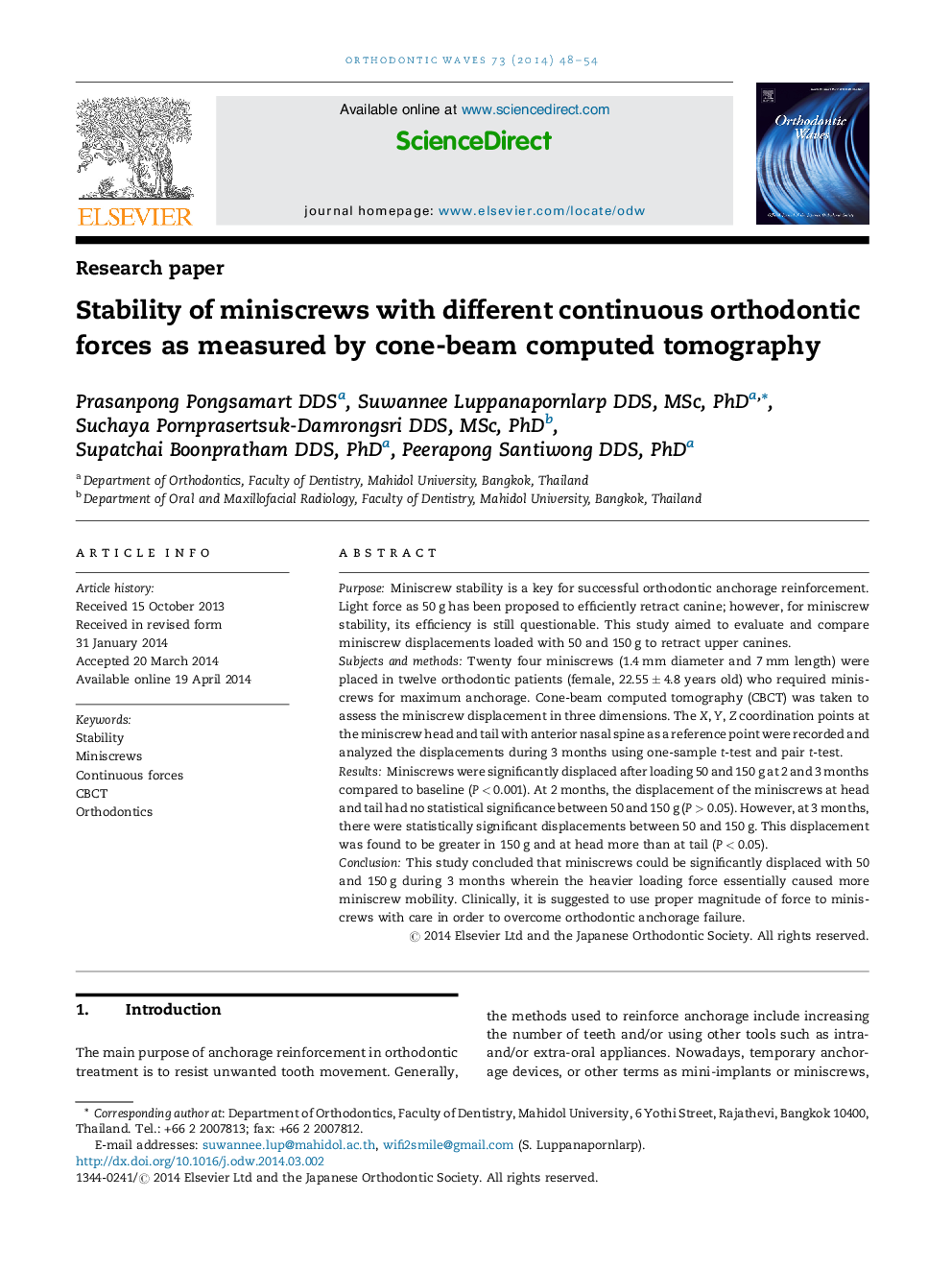| Article ID | Journal | Published Year | Pages | File Type |
|---|---|---|---|---|
| 3170349 | Orthodontic Waves | 2014 | 7 Pages |
PurposeMiniscrew stability is a key for successful orthodontic anchorage reinforcement. Light force as 50 g has been proposed to efficiently retract canine; however, for miniscrew stability, its efficiency is still questionable. This study aimed to evaluate and compare miniscrew displacements loaded with 50 and 150 g to retract upper canines.Subjects and methodsTwenty four miniscrews (1.4 mm diameter and 7 mm length) were placed in twelve orthodontic patients (female, 22.55 ± 4.8 years old) who required miniscrews for maximum anchorage. Cone-beam computed tomography (CBCT) was taken to assess the miniscrew displacement in three dimensions. The X, Y, Z coordination points at the miniscrew head and tail with anterior nasal spine as a reference point were recorded and analyzed the displacements during 3 months using one-sample t-test and pair t-test.ResultsMiniscrews were significantly displaced after loading 50 and 150 g at 2 and 3 months compared to baseline (P < 0.001). At 2 months, the displacement of the miniscrews at head and tail had no statistical significance between 50 and 150 g (P > 0.05). However, at 3 months, there were statistically significant displacements between 50 and 150 g. This displacement was found to be greater in 150 g and at head more than at tail (P < 0.05).ConclusionThis study concluded that miniscrews could be significantly displaced with 50 and 150 g during 3 months wherein the heavier loading force essentially caused more miniscrew mobility. Clinically, it is suggested to use proper magnitude of force to miniscrews with care in order to overcome orthodontic anchorage failure.
